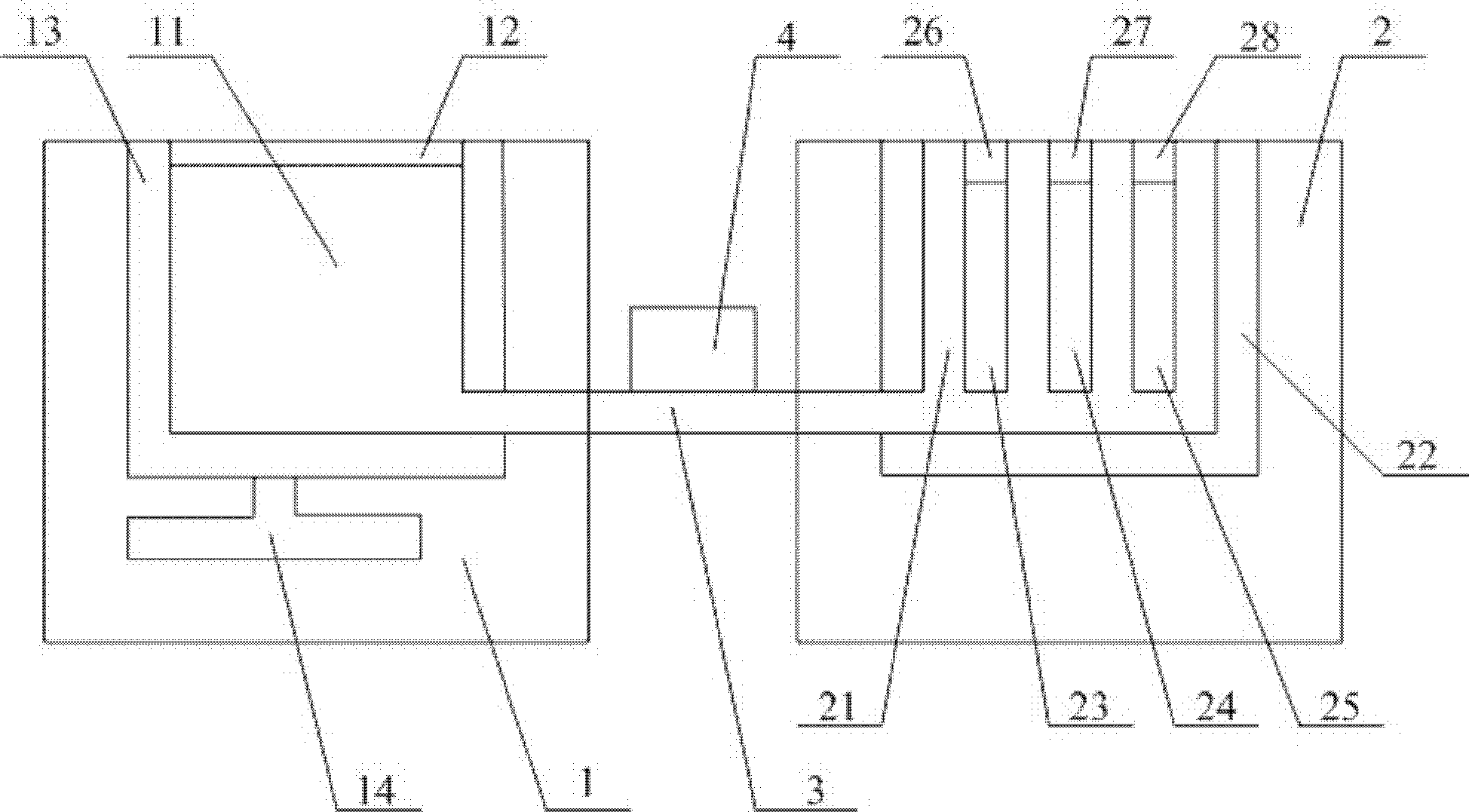Device and method for detecting toxicity of water body
A detection device and detection method technology, applied in measuring devices, material analysis through electromagnetic means, instruments, etc., can solve the problems of high detection cost, false negatives, false positives, etc., and achieve improved detection sensitivity, high detection sensitivity, and improved The effect of detecting current
- Summary
- Abstract
- Description
- Claims
- Application Information
AI Technical Summary
Problems solved by technology
Method used
Image
Examples
Embodiment 1
[0114] by figure 1 The detection device shown in the water body toxicity test is carried out according to the following method:
[0115] Step 1: Add Escherichia coli E.coli stored in a phosphate buffer solution of 0.2 mol / L and a pH value of 7.0 to the electrochemical detection cell 21, then add the electronic mediator potassium ferricyanide, and dilute with deionized water to 1 ml to make the final concentration of E.coli OD 600 6, the concentration of potassium ferricyanide is 45mmol / L; the electrochemical detection cell 21 is kept at a constant temperature of 20°C, with 20 diameters of 25μm and 0.5μmα-Al 2 o 3 The microarray electrode composed of treated palladium microelectrode is the working electrode, the Ag / AgCl electrode is the reference electrode, and the coiled platinum wire is the counter electrode; through the external electrochemical workstation CHI660, apply +0.45 between the working electrode and the reference electrode. V bias 10s, record the current value o...
Embodiment 2
[0122] The experiment was carried out according to the method and steps of Example 1, with the difference that 25 diameters of 20 μm and 0.5 μm α-Al 2 o 3 The microarray electrodes composed of treated gold microelectrodes were used as working electrodes, and arsenic ion solutions with concentrations of 20mg / L, 30mg / L, 50mg / L, 80mg / L and 100mg / L were prepared respectively. For the results, see image 3 , image 3 The graph of the concentration and current inhibition rate that provides for the embodiment of the present invention 2, by image 3 It can be seen that the IC50 value of arsenic ion is 92 mg / L.
Embodiment 3
[0124]The experiment was carried out according to the method and steps of Example 1, with the difference that 30 diameters of 25 μm and 0.5 μm α-Al 2 o 3 The microarray electrode composed of treated platinum-nickel alloy microelectrode is the working electrode, the electrochemical detection cell 21 is kept at a constant temperature of 25°C, and BOD seed is used as the test organism, and the concentration is 2.5mg / L, 5mg / L, and 7.5mg respectively. / L, 12.5mg / L, 15mg / L, 20mg / L, 25mg / L, 30mg / L and 35mg / L 3,5-dichlorophenol solutions, see the results Figure 4 , Figure 4 The graph of the concentration and current inhibition rate provided for the embodiment of the present invention 3, by Figure 4 It can be seen that the IC50 value of 3,5-dichlorophenol is 92 mg / L.
PUM
 Login to View More
Login to View More Abstract
Description
Claims
Application Information
 Login to View More
Login to View More - R&D
- Intellectual Property
- Life Sciences
- Materials
- Tech Scout
- Unparalleled Data Quality
- Higher Quality Content
- 60% Fewer Hallucinations
Browse by: Latest US Patents, China's latest patents, Technical Efficacy Thesaurus, Application Domain, Technology Topic, Popular Technical Reports.
© 2025 PatSnap. All rights reserved.Legal|Privacy policy|Modern Slavery Act Transparency Statement|Sitemap|About US| Contact US: help@patsnap.com



